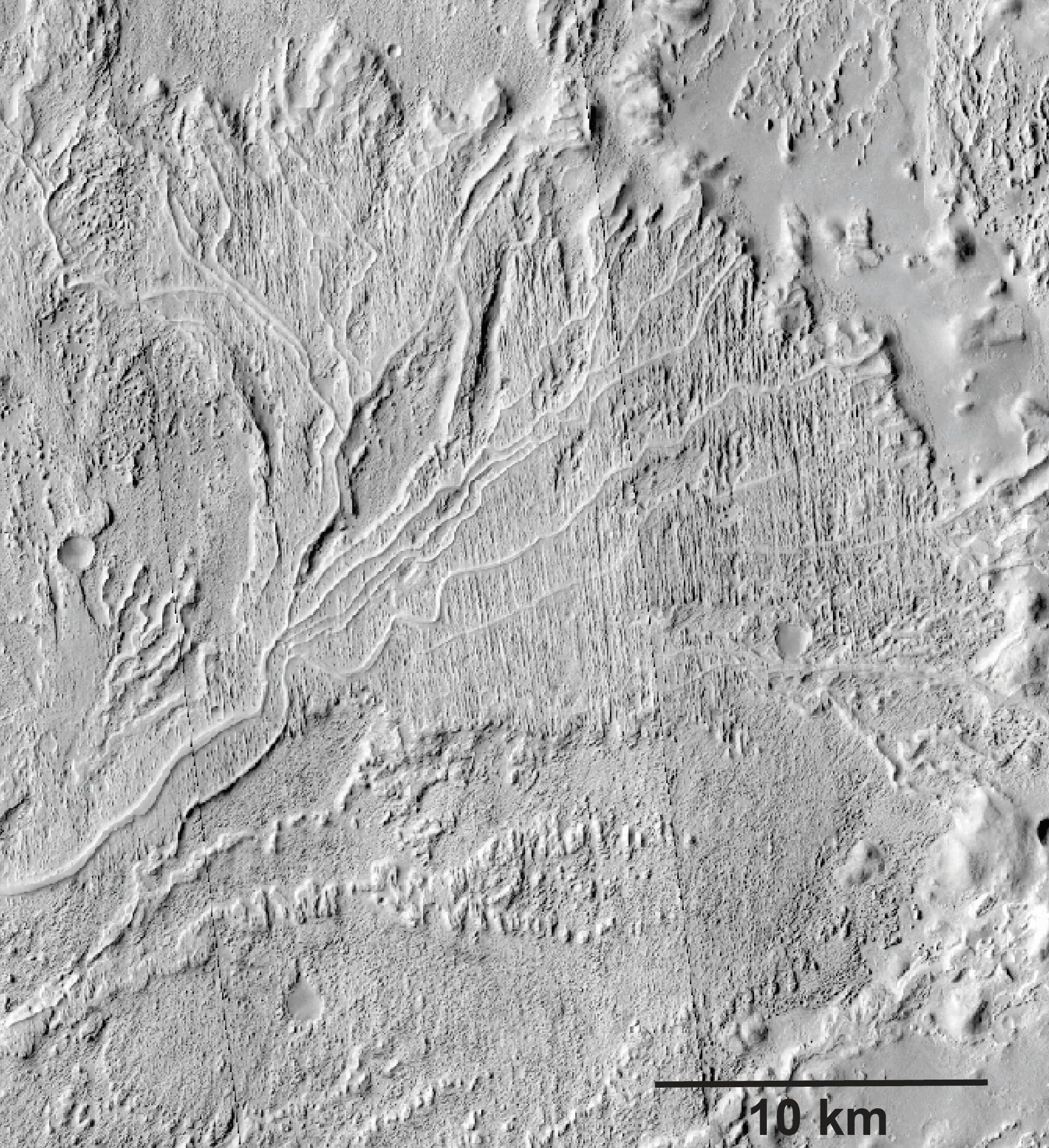Post contributed by Dr. Zach Dickeson, Department of Earth Sciences, Natural History Museum, London, UK.
At geological timescales, individual lakes are only transient features on the Earth’s surface. Conditions within lake basins change over time, eventually filling with sediment, drying up, or draining completely by steady erosion (or catastrophic breach) of the basin margin. Sites where lakes existed in the past are known as palaeolakes, and in addition to Earth, hundreds of examples have been identified on Mars (Goudge et al., 2015). Rather than a single characteristic landform, palaeolakes on Mars are typically identified by a set of topographic and morphological features such as shown in Image 1. Careful investigation of associated river valleys, deltas, layered deposits, and shoreline terraces can reveal details of a lake’s origin, development, and eventual demise (Dickeson et al., 2022).

Image 1: Deposits and landforms within a palaeolake in Arabia Terra, Mars. Two past lake levels are represented by contours defined by outlet valley elevations. The inlet valley is visible at the bottom of the image where it enters the palaeolake basin. A broad, flat-surfaced sediment fan with a steep front sits at a higher elevation, and is incised through by the inlet valley, which continues into the basin to terminate at the apex of a lower and more heavily weathered sediment fan. The two fans are interpreted as deltas, and match the two different fill levels within the palaeolake. Context Camera image D12_031993_2114_XN_31N014W; http://viewer.mars.asu.edu/viewer/ctx/D12_031993_2114_XN_31N014W; NASA/JPL/MSSS/University of Arizona.
(more…)









